The Importance of Cargo Protection System in Transportation

A Comprehensive Guide: How Long Does It Take to Get a CDL?
June 6, 2023
Does Liability Insurance Cover Theft? Exploring the Coverage of Liability Insurance
June 23, 2023In the world of transportation, safeguarding valuable shipment is of maximum importance. The ever-increasing complexities related to transportation necessitate the implementation of a robust cargo protection system. These systems play an important role in ensuring the steady transportation of products, minimizing losses, and retaining the integrity of the delivery chain. In this blog, we will explore the significance of shipment protection structures in transportation, highlighting their function in safeguarding protected cargo throughout the logistics process.
1. Enhancing Cargo Security:
Cargo protection structures are designed to enhance security features for valuable shipments. With the steady danger of theft, harm, or unauthorized access, these systems offer an extra layer of safety. By incorporating superior technologies which includes GPS tracking, tamper-evident seals, and intrusion detection structures, shipment protection systems assist in monitoring and safeguarding shipments at diverse levels of transportation. The utilization of surveillance cameras and actual-time tracking software enables stakeholders to stumble on and respond to safety breaches right away. These structures act as deterrents for capacity criminals and enhance overall shipment safety.
2. Minimizing Losses and Damages:
Many reasons for imposing cargo safety structures are to limit losses and damages. These systems are geared up with functions that stumble on and respond to capacity risks, which includes temperature variations, moisture, influences, or mishandling. By constantly monitoring these elements, cargo safety systems permit proactive measures to be taken, lowering the probability of shipment damage and financial losses. For example, temperature-sensitive shipment may be geared up with temperature monitoring gadgets that cause alarms whilst the specified range is surpassed, taking into consideration timely intervention and stopping spoilage or degradation of goods.
3. Ensuring Regulatory Compliance:
In the transportation enterprise, adherence to regulatory necessities is critical. Cargo safety systems resource in ensuring compliance with enterprise requirements and regulations associated with the transportation of precise types of goods. They provide documentation, actual-time data, and indicators that assist in assembly felony and safety responsibilities, warding off consequences, and maintaining the reputation of the involved events. For example, unsafe substances require special dealing with and adherence to protection suggestions. Cargo protection system can monitor and file any deviations from the required protocols, ensuring compliance and minimizing the chance of accidents or environmental damage.
4. Mitigating Supply Chain Disruptions:
Effective cargo protection structures contribute to minimizing disruptions within the supply chain. By employing actual-time tracking and tracking abilities, those systems permit stakeholders to discover potential bottlenecks or delays promptly. This permits for proactive measures to be taken, including rerouting shipments or addressing logistical problems, thereby decreasing downtime and making sure the well timed transport of covered shipment. By minimizing disruptions, shipment safety structures enhance the performance and reliability of the supply chain, enhancing customer pride and maintaining enterprise continuity.
5. Improved Customer Satisfaction:
In the present day competitive marketplace, customer delight is an essential thing for businesses. Implementing shipment safety systems instill confidence in clients concerning the protection and security in their shipments. By ensuring that protected cargo reaches its destination intact and without any compromises, corporations can enhance customer trust, loyalty, and satisfaction. Cargo safety systems enable obvious tracking and real-time updates, allowing customers to display the development of their shipments and have peace of thoughts knowing that their items are being handled with care.
6. Cost Efficiency and Insurance Benefits:
Cargo safety systems additionally make a contribution to fee performance and insurance advantages. By decreasing the risk of shipment damage or loss, corporations can potentially negotiate better insurance charges. Additionally, the timely and steady transport of cargo leads to lower insurance claims, reduced operational prices, and improved normal profitability. Cargo safety systems provide correct records and documentation, enabling efficient claims processing and decreasing the administrative burden related to cargo insurance claims. Furthermore, with the aid of minimizing losses and damages, companies can avoid the luxurious rework, substitute, or reshipment of goods.
Conclusion:
Cargo protection systems play an integral role in the transportation industry. They enhance cargo safety and additionally reduce losses, ensure regulatory compliance, mitigate supply chain disruptions, improve customer trust, and offer cost efficiency benefits. As the complexity and risks of transportation hold to evolve, making an investment in strong cargo safety systems becomes increasingly crucial. By prioritizing the safeguarding of covered cargo at some point of the logistics method, agencies can build a resilient and stable delivery chain community, foster customer trust, and gain a competitive side within the industry.


